Related Research Articles
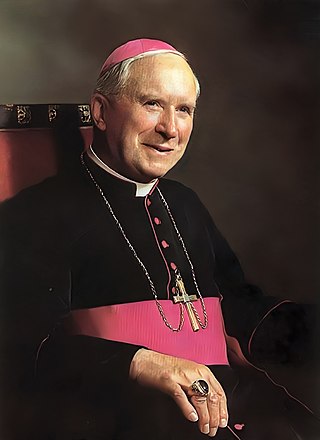
Marcel François Marie Joseph Lefebvre was a French Catholic archbishop who greatly influenced modern traditionalist Catholicism. In 1970, five years after the close of the Second Vatican Council, he founded the Society of Saint Pius X (SSPX), a community to train seminarians in the traditional manner, in the village of Écône, Switzerland. In 1988, Pope John Paul II declared that Archbishop Lefebvre had "incurred the grave penalty of excommunication envisaged by ecclesiastical law" for consecrating four bishops against the pope's express prohibition but, according to Lefebvre, in reliance on an "agreement given by the Holy See ... for the consecration of one bishop."

Roger Northburgh was a cleric, administrator and politician who was Bishop of Coventry and Lichfield from 1321 until his death. His was a stormy career as he was inevitably involved in many of the conflicts of his time: military, dynastic and ecclesiastical.
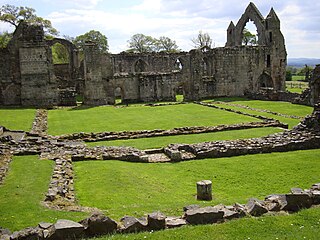
Haughmond Abbey is a ruined, medieval, Augustinian monastery a few miles from Shrewsbury, England. It was probably founded in the early 12th century and was closely associated with the FitzAlan family, who became Earls of Arundel, and some of their wealthier vassals and allies. It was a substantial, successful and wealthy house for most of its four centuries, although evidence of abuses appeared before its dissolution in 1539. The buildings fell into disrepair and the church was largely destroyed, although the remains of some of the domestic buildings remain impressive. The site is now in the care of English Heritage and is open to the public throughout the year and free entry.

The Diocese of Bath and Wells is a diocese in the Church of England Province of Canterbury in England.

Thomas of Bayeux was Archbishop of York from 1070 until 1100. He was educated at Liège and became a royal chaplain to Duke William of Normandy, who later became King William I of England. After the Norman Conquest, the king nominated Thomas to succeed Ealdred as Archbishop of York. After Thomas' election, Lanfranc, Archbishop of Canterbury, demanded an oath from Thomas to obey him and any future Archbishops of Canterbury; this was part of Lanfranc's claim that Canterbury was the primary bishopric, and its holder the head of the English Church. Thomas countered that York had never made such an oath. As a result, Lanfranc refused to consecrate him. The King eventually persuaded Thomas to submit, but Thomas and Lanfranc continued to clash over ecclesiastical issues, including the primacy of Canterbury, which dioceses belonged to the province of York, and the question of how York's obedience to Canterbury would be expressed.
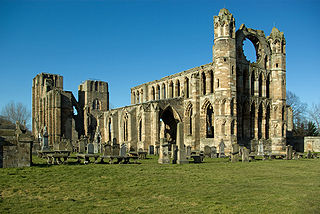
Elgin Cathedral, a historic ruin in Elgin, Moray, northeast Scotland, was dedicated to the Holy Trinity. It was established in 1224 on land granted by King Alexander II and stood outside the burgh of Elgin, close to the River Lossie. It replaced the cathedral at Spynie located 3 kilometres (2 mi) to the north, which was served by a small chapter of eight clerics. By 1226, the new and developing cathedral was staffed with 18 canons, a number that increased to 23 by 1242. A damaging fire in 1270 led to significant enlargement. It remained unscathed during the Wars of Scottish Independence but suffered extensive fire damage in 1390 when attacked by Robert III's brother Alexander Stewart, Earl of Buchan, also known as the Wolf of Badenoch. In 1402, the cathedral precinct faced another incendiary attack by the Lord of the Isles followers.
The Diocese of Aberdeen was originally believed to be the direct continuation of an 11th-century bishopric at Mortlach in present-day Moray. However, this early date and the first bishops were based on a misinterpretation and reliance on the early charters found in the cartulary of Aberdeen Cathedral. These charters are now known to be false. The first recorded bishop of the diocese was Nectan, mentioned in the Book of Deer around 1132. The earliest direct written evidence of a bishop in Aberdeen appears in a papal bull addressed to Bishop Edward in 1157. This bull acknowledged the existence of his cathedral, discussed the formation of a chapter, and marked the beginning of the diocesan expansion.
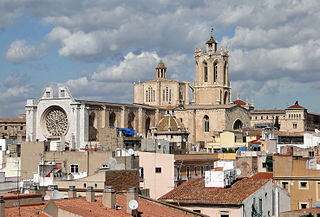
The Archdiocese of Tarragona is a Latin Church ecclesiastical territory located in north-eastern Spain, in the province of Tarragona, part of the autonomous community of Catalonia. The archdiocese heads the ecclesiastical province of Tarragona, having Metropolitan authority over the suffragan dioceses of Girona, Lleida, Solsona, Tortosa, Urgell and Vic.
John of Tours or John de Villula (died 1122) was a medieval Bishop of Wells in England who moved the diocese seat to Bath. He was a native of Tours and was King William I of England's doctor before becoming a bishop. After his consecration as bishop, he was either given or purchased Bath Abbey, a rich monastery, and then moved the headquarters of the diocese from Wells, to the abbey. He rebuilt the church at Bath, building a large cathedral that no longer survives. He gave a large library to his cathedral and received the right to hold a fair in Bath. Not noted for his scholarship, he died suddenly in 1122.
The former French Catholic diocese of Alet was created in 1317 from territory formerly in the diocese of Narbonne. The diocese continued until the French Revolution when it was suppressed by the Concordat of 1801.
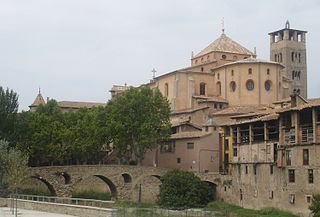
The Diocese of Vic is a Latin diocese of the Catholic Church with its seat in the city of Vic in the ecclesiastical province of Tarragona in Catalonia, Spain. Its cathedral is a basilica dedicated to Saint Peter.
Walter de Coventre was a 14th-century Scottish ecclesiastic. There is no direct evidence of his birthdate, his family, or his family's origin, although he may have come from the region around Abernethy, where a family with the name de Coventre is known to have lived. Walter appeared in the records for the first time in the 1330s, as a student at the University of Paris. From there he went on to the University of Orléans, initially as a student before becoming a lecturer there. He studied the arts, civil law and canon law, and was awarded many university degrees, including two doctorates. His studies were paid for, at least partially, by his benefices in Scotland. Despite holding perhaps more than five benefices at one stage, he did not return to Scotland until the late 1350s.

Tonbridge Priory was a priory in Tonbridge, Kent, England that was established in 1124. It was destroyed by fire in 1337 and then rebuilt. The priory was disestablished in 1523. The building stood in 1735, but was a ruin by 1780. The remains of the priory were demolished in 1842 when the South Eastern Railway built the railway through Tonbridge, the original Tonbridge station standing on its site.

Froia was a canon of the cathedral of Vic from 957 and bishop from 972. His predecessor, Atto, tried to have Vic raised to archiepiscopal status, but was assassinated by his opponents. Elected to replace him, Froia was consecrated by Ermengol, archbishop of Narbonne, who had opposed Atto because Vic was a suffragan diocese of Narbonne.
Atto was the bishop of Vic from 957 until his death. He had the bishopric of Vic raised to an archbishopric, but was assassinated by his opponents in 971.
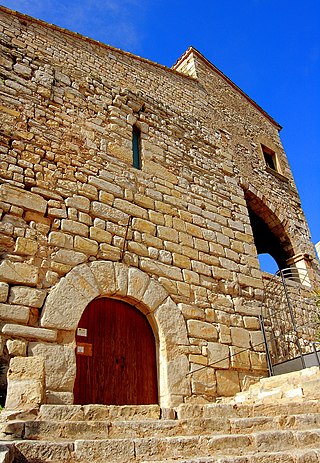
Borrell was the bishop of Vic from 1010 until 1017. He was elected to replace Arnulf, who had died in battle against the Córdobans, and his episcopate coincided with the renewed colonisation of the west of Catalonia.
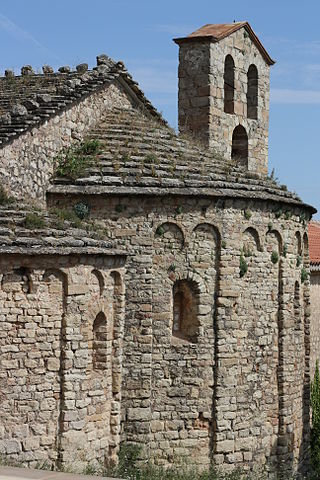
Jordi was the bishop of Vic (Ausona) from 914 until his death. After the death of bishop Idalguer, the clergy and people (plebs) of Vic acclaimed as bishop Jordi, whom they described as "noble, prudent, sober and chaste". His election was confirmed on 17 June 914.
John Crakehall was an English clergyman and Treasurer of England from 1258 to 1260. Possibly the younger son of a minor noble family in Yorkshire, Crakehall served two successive bishops of Lincoln from around 1231 to the 1250s. He then became an archdeacon in the diocese of Lincoln before being named as treasurer, where he served until his death in 1260. He owed his appointment to the treasurership to a number of factors, including his reputation for administrative ability and his relationship with the leader of the baronial effort to reform royal government. While in office, he strove to improve the administration of the exchequer as well as collect outstanding debts to the government and improve royal revenues.
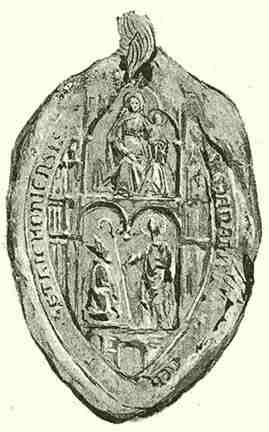
Csanád Telegdi was a Hungarian prelate in the first half of the 14th century. He served as Bishop of Eger from 1322 to 1330, then Archbishop of Esztergom from 1330 until his death. Descending from an old Hungarian kindred, he was a confidant of the ruling Capetian House of Anjou. He crowned Louis I of Hungary in July 1342. The complete renovation of the Esztergom Cathedral took place during his archiepiscopate.

Jesús Alturo i Perucho is a Catalan palaeographer, philologist and cultural historian.
References
- Alturo i Perucho, Jesús (1999). Studia in codicum fragmenta. Universitat Autònoma de Barcelona.
- Freedman, Paul (1983). Diocese of Vic: Tradition and Regeneration in Medieval Catalonia . Rutgers. ISBN 9780813509709.
- Zimmermann, Michel (2003). Écrire et lire en Catalogne: IXe–XIIe siècle. Vol. 1. Casa de Velázquez.